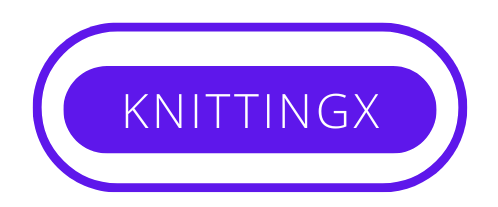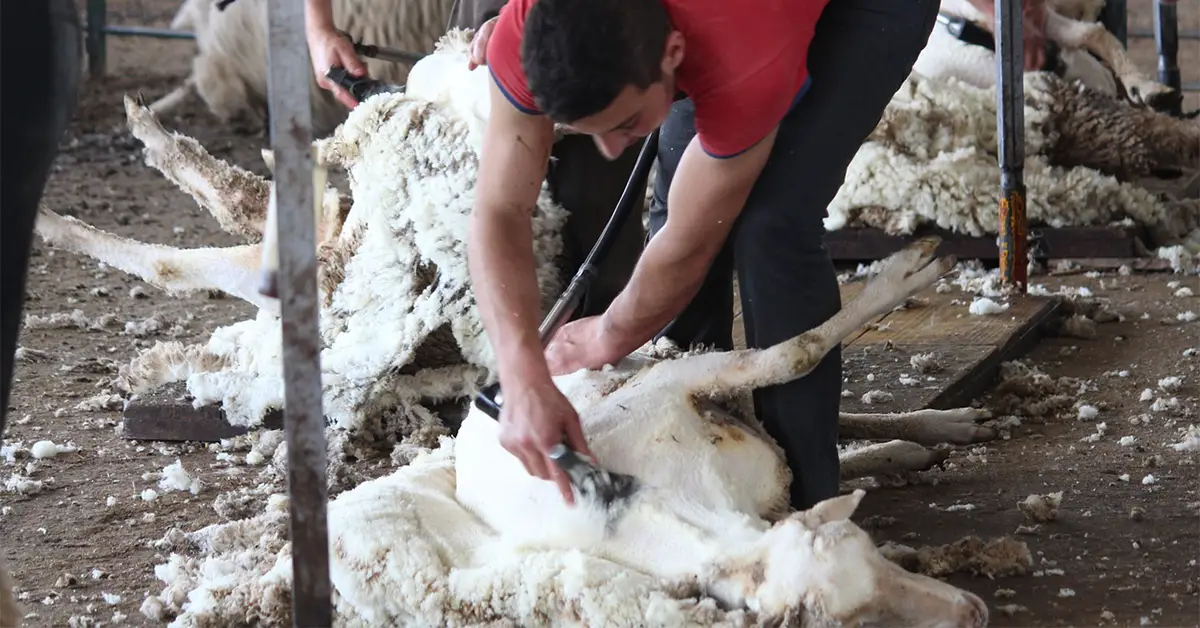Sheep shearing, when done correctly and by trained professionals, is not inherently cruel. It is a necessary practice for the health and well-being of sheep. Shearing helps to prevent issues like heat stress, parasite infestation, and discomfort caused by excessive wool growth. However, concerns arise when shearing is performed improperly, hastily, or by inexperienced individuals. Rough handling, causing injuries, or neglecting the welfare of the sheep can lead to suffering and harm.
Understanding Sheep Shearing
Sheep shearing is an essential part of maintaining the health and wellbeing of domestic sheep. Contrary to the claims by PETA that domestic sheep grow just enough wool to protect themselves from temperature extremes, in reality, most modern sheep breeds do not naturally shed their winter coats (The Guardian). This is a result of human intervention over thousands of years, making these modern breeds reliant on humans for proper shearing.
Here are a few key points to understand about sheep shearing:
- Shearing prevents overheating: Without shearing, sheep would continue to grow wool, leading to overheating in summer and decreased mobility.
- Reducing flystrike risks: Excessive wool growth increases the risk of flies laying eggs in the skin folds, causing distress and potential death (PETA).
- Cruelty-free shearing: While there may be incidents of inhumane shearing practices, ethical shearing focuses on the welfare of the sheep, ensuring that the process is done gently and kindly (The Guardian).
Different sheep breeds and their wool characteristics
Different sheep breeds have unique wool characteristics, making each breed valuable for various purposes. Here are some commonly known breeds and their wool features:
- Merino: Known for their soft, fine, and dense wool, Merino sheep produce the most high-quality fiber, suitable for making garments that are comfortable against the skin.
- Romney: Romney wool is lustrous and long, with a coarser texture than Merino. Their fleece is valued for its versatility in crafting carpets, outerwear, and natural wool insulation.
- Corriedale: A cross between Merino and Lincoln breeds, Corriedale sheep produce medium-grade wool prized for its softness and durability. Their fiber is suitable for both knitting and weaving projects.
- Lincoln: Lincoln sheep have the longest, heaviest, and lustrous wool among all breeds. Their strong fiber is ideal for making rope, heavy-duty fabrics, and durable outerwear.
- Suffolk: Suffolk wool is medium-grade and springy, with good elasticity. This breed is ideal for producing yarn with a soft feel and excellent stitch definition.
The Process of Sheep Shearing
- Shearing is essential to protect sheep from extreme temperatures and potential health issues associated with excess wool.
- Sheep are typically deprived of food and water before shearing, making them feel weak and putting up minimal resistance.
- Shearers are often paid by the volume of wool, leading to a rushed and rough process. This can result in injuries to the sheep.
- “I have seen shearers punch sheep with their shears or their fists until the sheep’s nose bled. I have seen sheep with half their faces shorn off…” – An eyewitness account
- To counter the rough handling and injuries during shearing, ethical practices have been introduced, focusing on the safety and well-being of the sheep.
- In Australia, the most commonly raised sheep are Merinos, which are bred to have wrinkly skin for more wool yield. The excess wool can lead to heat exhaustion and other health issues.
- Proper training and education for shearers is imperative to ensure a more humane and efficient process, avoiding any unnecessary harm to the sheep.
Tools and techniques used in shearing
Shearing is an essential practice for sheep breeds that are specifically grown for wool production. To carry out this process effectively, several tools and techniques are employed:
- Handpieces: Mechanical shears called handpieces are used for shearing the sheep’s fleece. These tools are designed to remove the wool efficiently without causing discomfort to the animal.
- Proper positioning: Shearers are trained to move sheep through a series of set movements that make shearing more comfortable for both the animal and the worker. When positioned correctly, sheep do not resist or try to escape.
- Professional shearer training: Shearers need to be well-trained in best practice techniques to reduce the risk of cutting the sheep. Recognized training programs incorporate principles of animal welfare, animal handling, and the importance of good stockmanship.
- Pain relief: When wounds occur due to accidental nicks and cuts, treatment should be immediate, and topical pain relief should be applied if stitches are needed.
- Chemical shearing: In 1998, CSIRO introduced a technology that involved injecting a protein to remove wool without mechanical shearing. While not widely adopted, this method has significant animal welfare advantages.
Debunking Myths and Misconceptions about Sheep Shearing
- Sheep Don’t Need Shearing: Contrary to popular belief, sheep do not need to be sheared. Left alone, they would produce just enough wool to protect themselves from extreme temperatures.
- Shearing is not Just a Haircut: Shearing is not a harmless and simple haircut process. It often involves cruel and violent handling of the sheep, which suffer from stress and fear throughout the process.
- Shearing is Stressful for Sheep: Mustering, yarding, and penning are all necessary steps involved in sheep shearing, causing stress and anxiety for the animals.
- Deprivation of Food and Water: “They [sheep] are deprived of food and water before being shorn in part so they’ll feel weak and put up minimal resistance” (PETA Australia Pty Ltd.) This adds to the cruelty of the shearing process.
- Violence in Shearing Sheds: Investigations by PETA revealed extreme cruelty to sheep in shearing sheds, including punching with closed fists and electric clippers, kneeling on the necks, and slamming them into the floor.
- Workers’ Attitude towards Sheep: Shearers are often paid by volume, not by the hour, which encourages rushed and careless shearing. As a result, sheep suffer from painful and life-threatening injuries due to the shearers’ violent handling.
Ethical Practices in Sheep Shearing
With a focus on the welfare of the animal and the quality of wool obtained, several ethical practices are essential in the sheep shearing process:
- Training and expertise: Shearers must undergo recognized training programs that incorporate animal welfare and handling principles. This ensures they are highly skilled and knowledgeable in handling sheep during the shearing process.
- Gentle handling: Reducing stress and potential pain for the sheep, shearers should adopt methods that allow for smooth movements of the animal, preventing struggling or escape attempts.
- Immediate treatment of injuries: In case of any cuts or wounds, shearers should treat them immediately with topical pain relief and appropriate stitching, if required.
- Maintaining a positive environment: The shearing shed must promote a positive atmosphere where the mistreatment of sheep is not tolerated, and ethical practices are enforced.
- Revisiting alternative wool removal: Consider the reintroduction of CSIRO’s technology that allows for non-invasive wool removal, massively reducing the risk of cuts and injuries to the sheep. This process involves injecting a protein into the sheep’s skin, leading to the whole fleece shedding within a week.
Conclusion
In conclusion, sheep shearing is a necessary process to maintain the health and welfare of domesticated sheep. When performed responsibly and with care, shearing can be a humane practice that benefits the animal. As per The Guardian, not shearing sheep can lead to overheating, decreased mobility, and increased risk of fly-strike, ultimately causing suffering and even death. However, it is essential to acknowledge the issues within the shearing industry highlighted by PETA.

